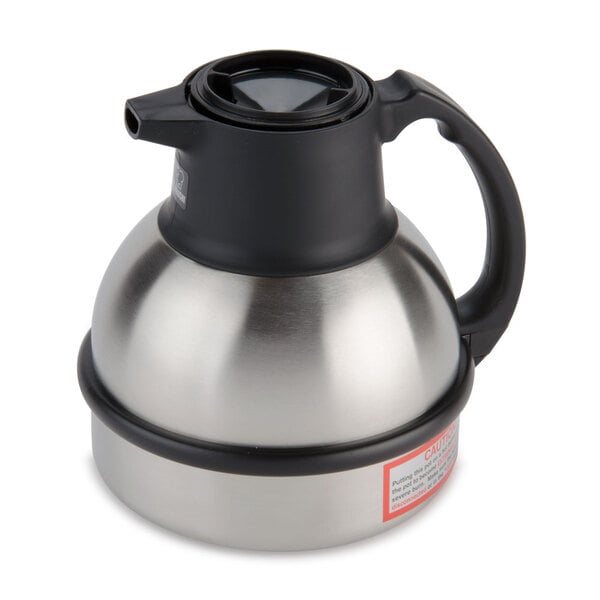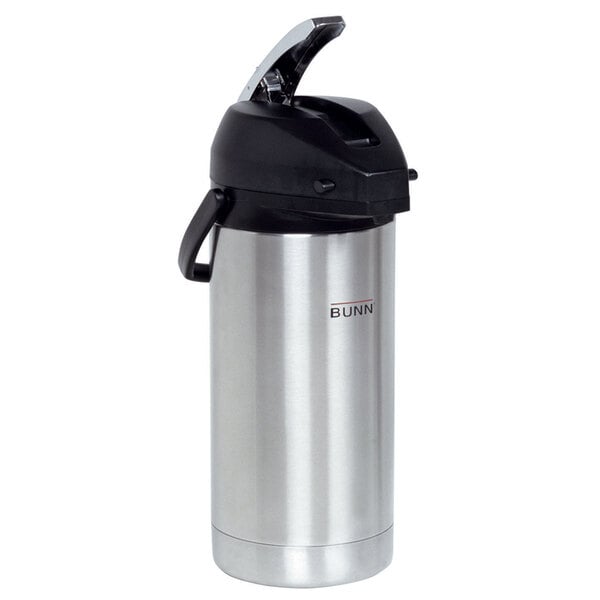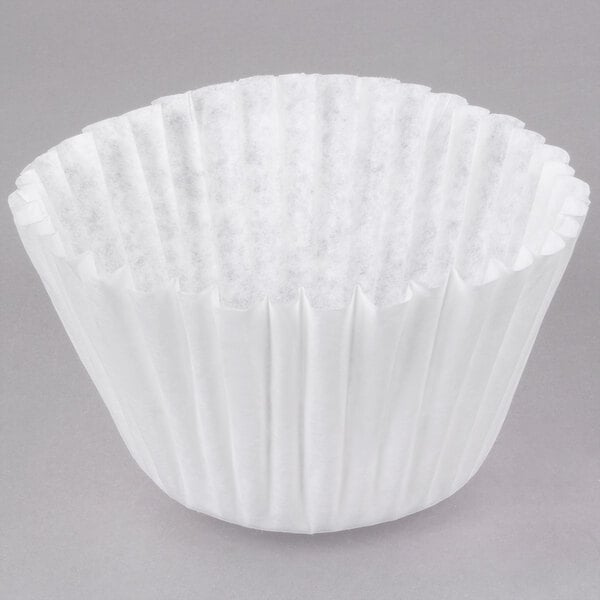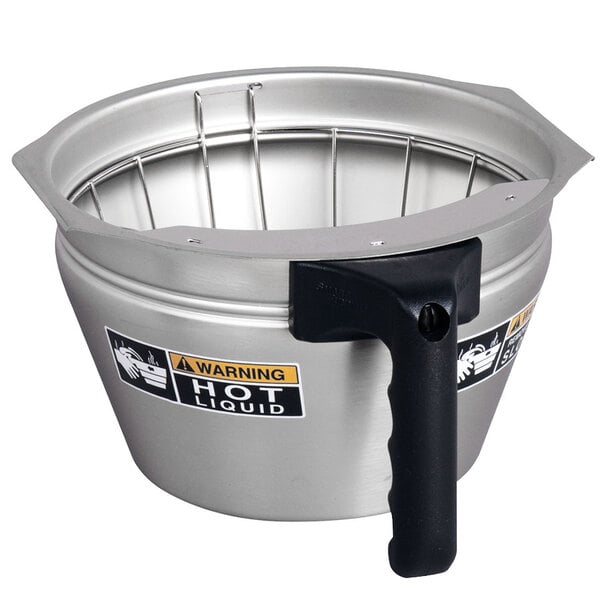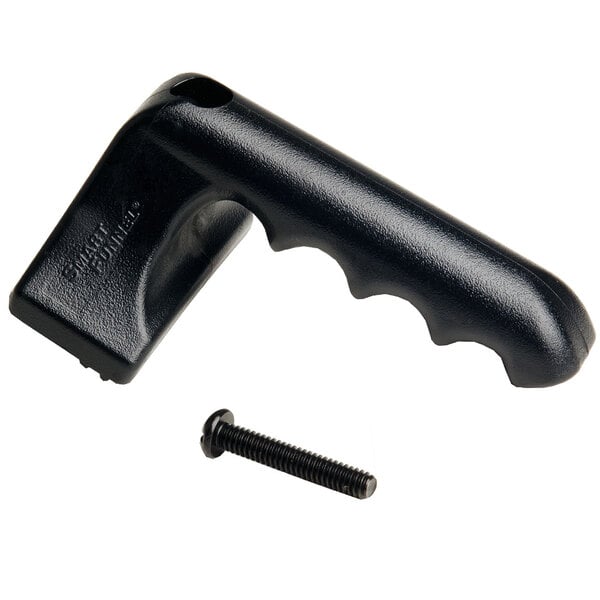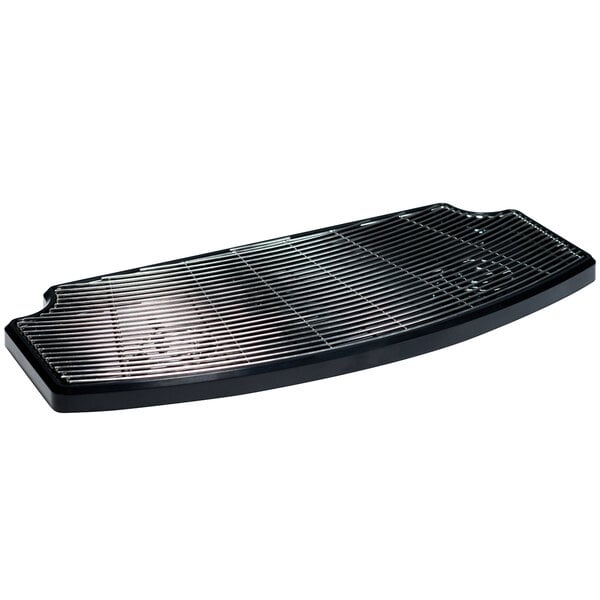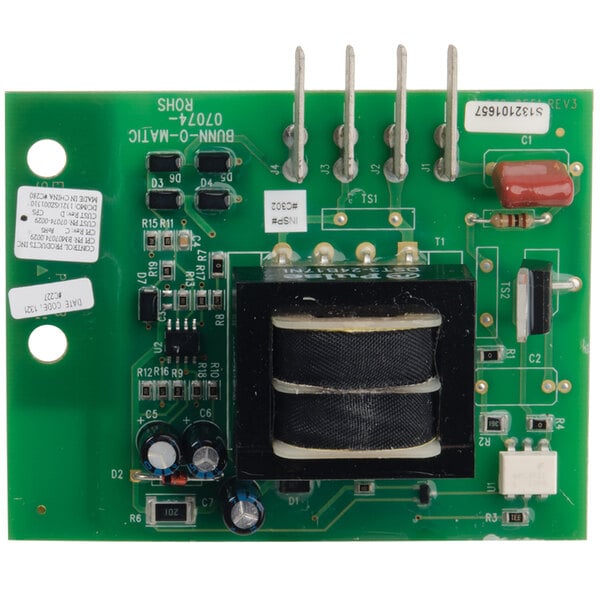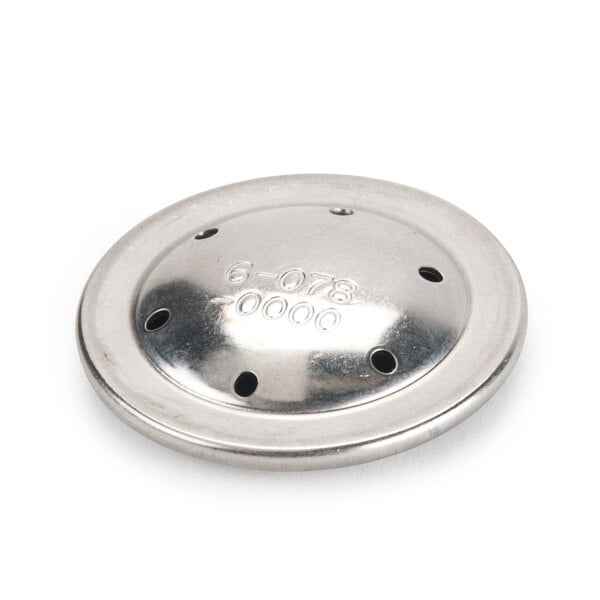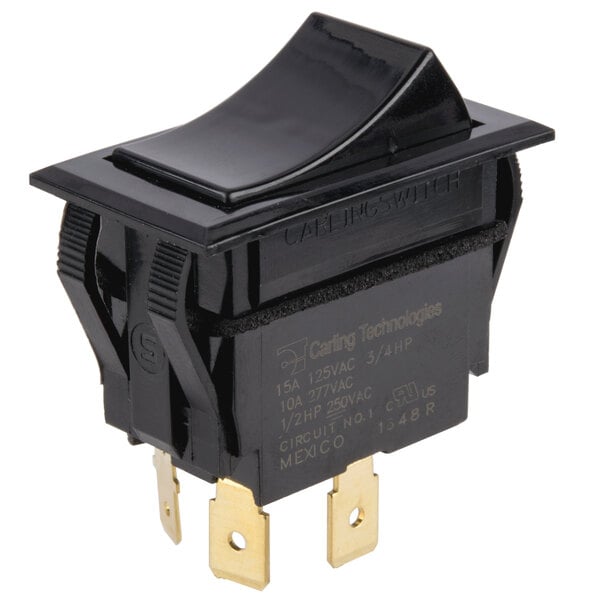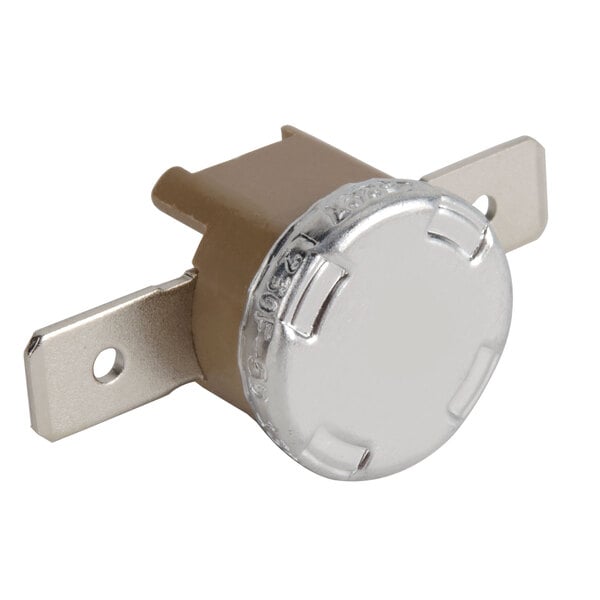
Bunn Coffee Maker Troubleshooting Tips
A malfunctioning coffee maker is a major inconvenience - leaks, overflowing, and temperature issues are all common problems that can affect any type of coffee maker over time, even top brands like Bunn. Fortunately, many of these problems can be fixed easily! We'll take you through some simple steps to try on your Bunn coffee maker first, and let you know when it's best to give your repair service a call.
Shop All Bunn Commercial Coffee Makers
Use the following links to navigate and learn how to troubleshoot common Bunn coffee maker issues:
Limescale buildup can wreak havoc on coffee equipment, and a lot of maintenance issues can be solved or prevented entirely by cleaning and deliming your coffee maker according to Bunn's recommendations.
How to Clean a Commercial Bunn Coffee Maker
We provide a step-by-step guide with pictures to show you how to clean your Bunn coffee maker. These steps should be done two to three times per week. Areas with hard water should be cleaned daily, if possible.

1. Turn off the machine and unplug it from the wall.
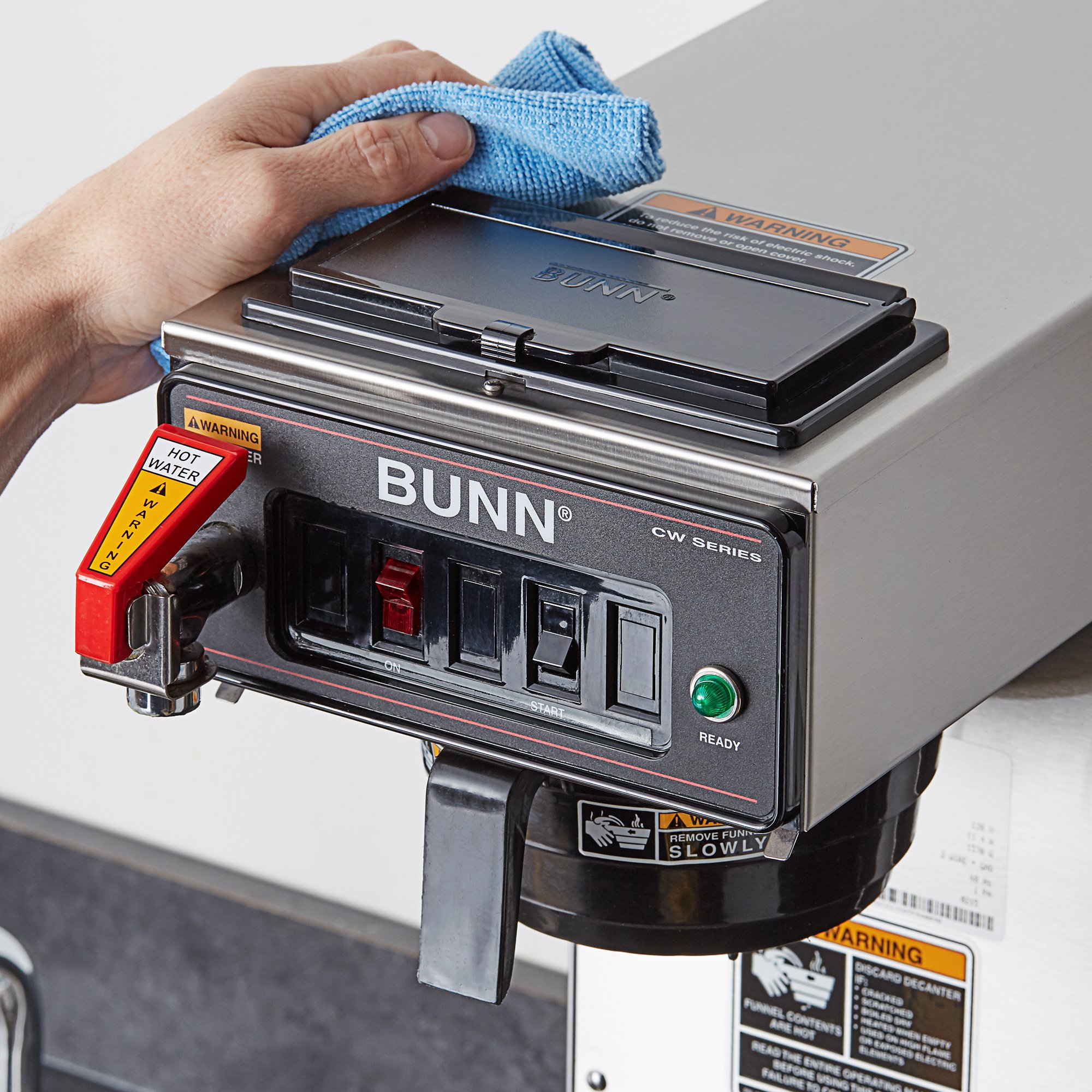
2. Clean the exterior with water and a mild detergent. Rinse with a damp cloth and use a second cloth to dry.
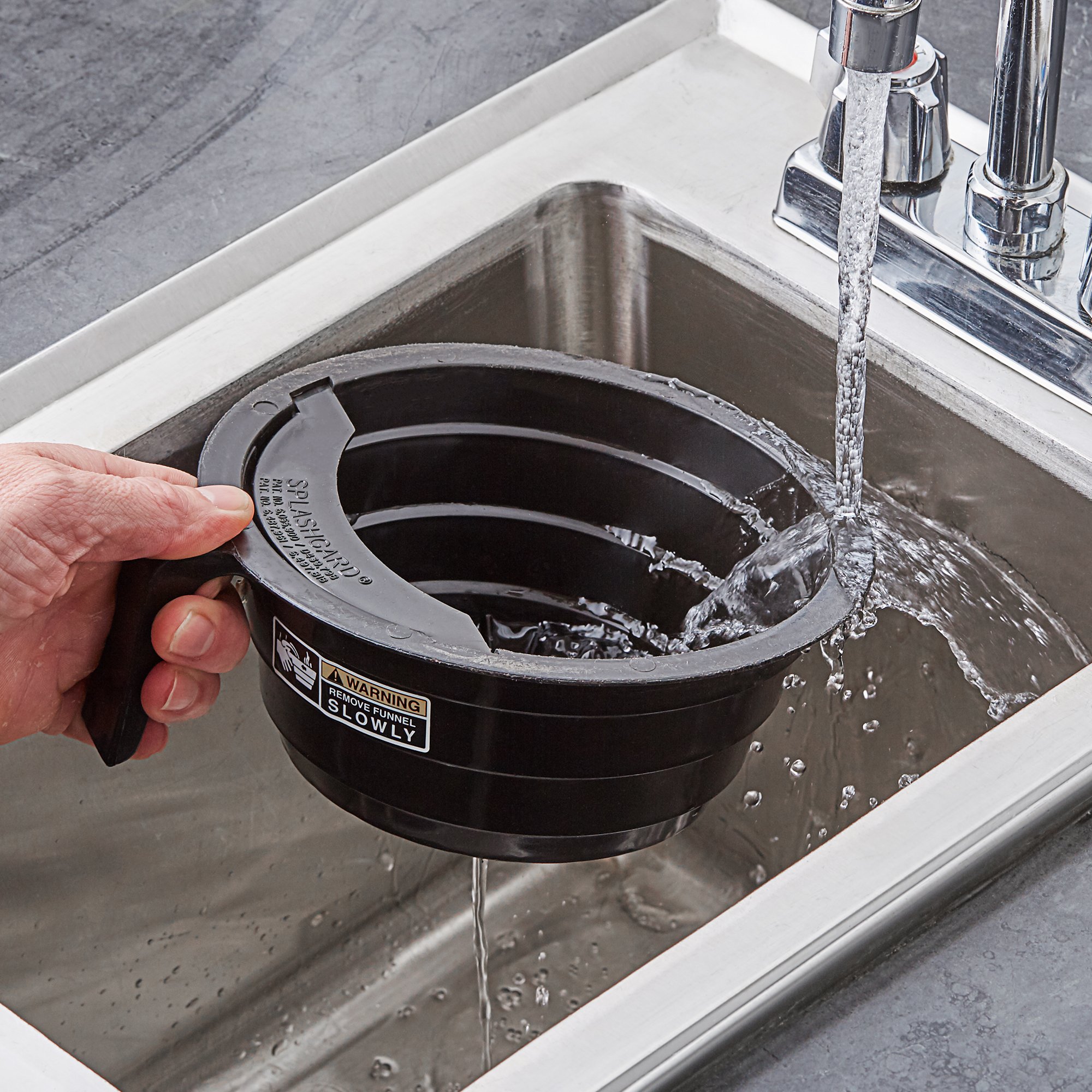
3. Wash and sanitize the brew funnel by hand.
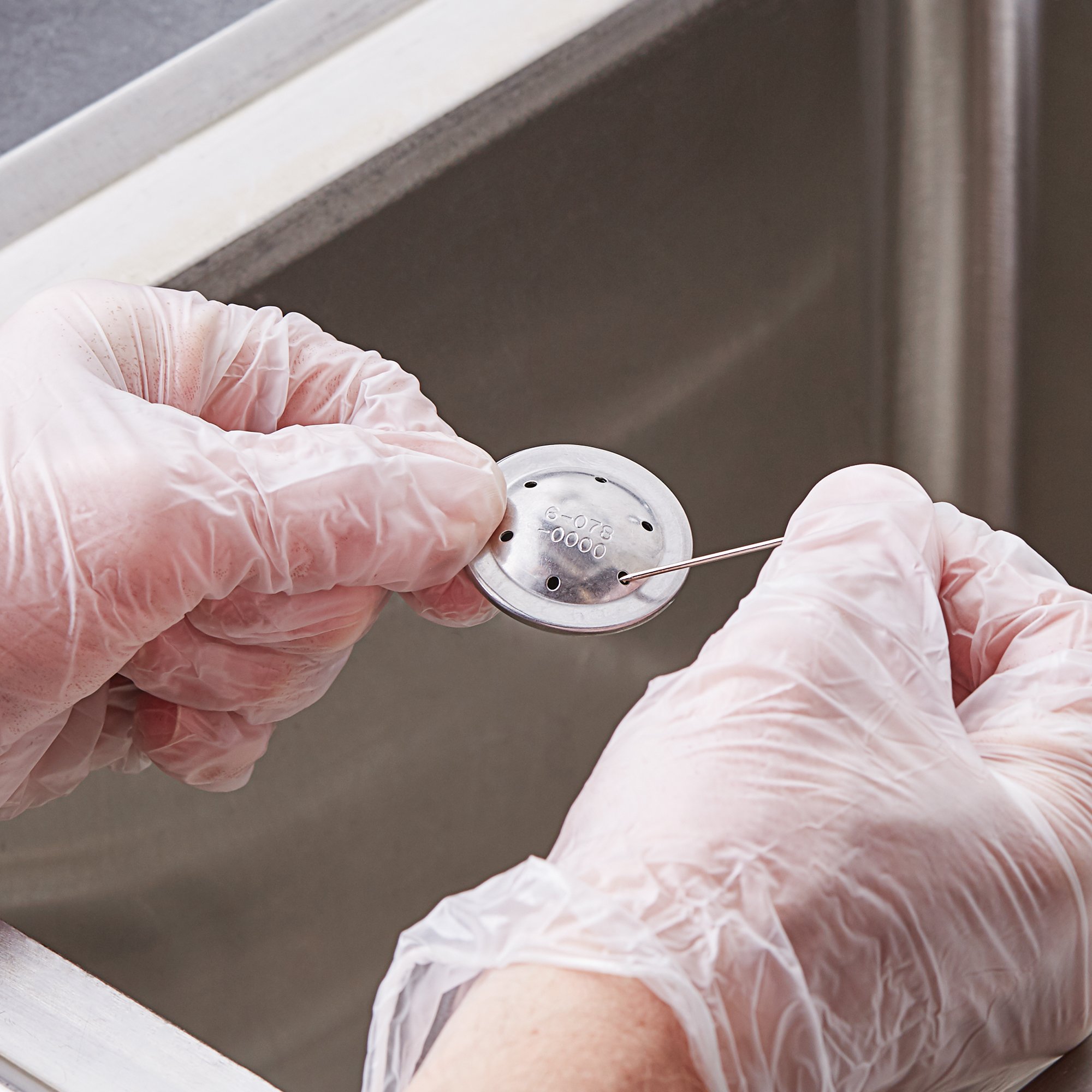
4. Remove the sprayhead and wash with a mild detergent. Remove lime deposits from the sprayhead and tube.
We've provided a step-by-step guide with pictures to show you how to descale a Bunn commercial coffee maker with vinegar. Follow these steps every month, doing it more frequently if you live in an area that has hard water. Limescale buildup is the root cause of many coffee maker issues, and taking a few steps to prevent it goes a long way in ensuring you won't have to call the technician later.
The acid in the vinegar solution works to loosen and dissolve lime deposits as it circulates through your machine. When done regularly, it helps to prevent performance-killing buildups on the heating elements and tank. Machines with especially heavy scale deposits may need professional cleaning or service.
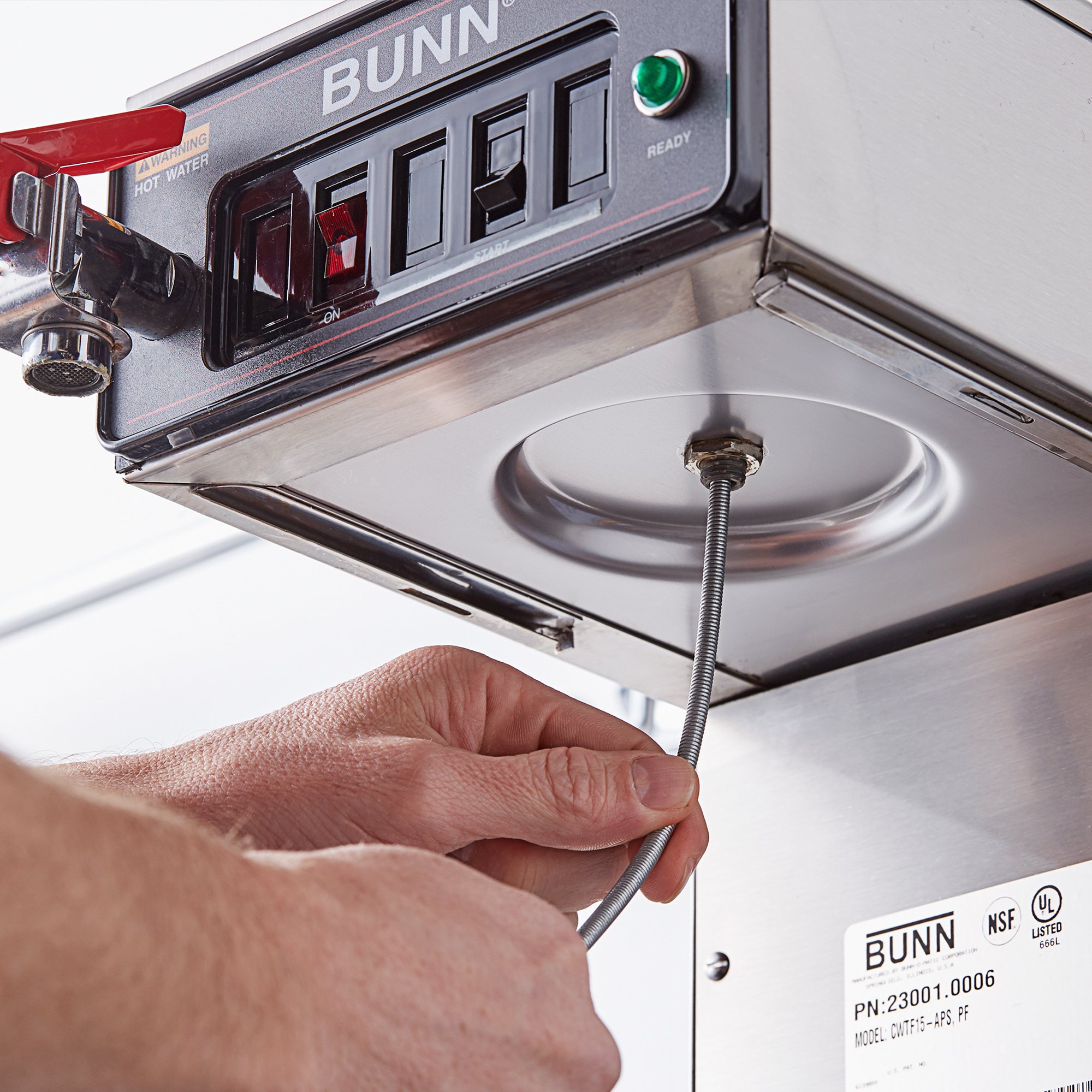
1. Insert a deliming spring into the coffee maker sprayhead tube. Saw back and forth several times to loosen up lime deposits.

2. Mix 2 parts distilled water to 1 part white vinegar and fill the reservoir. Run a brewing cycle and dispose of the water when done.
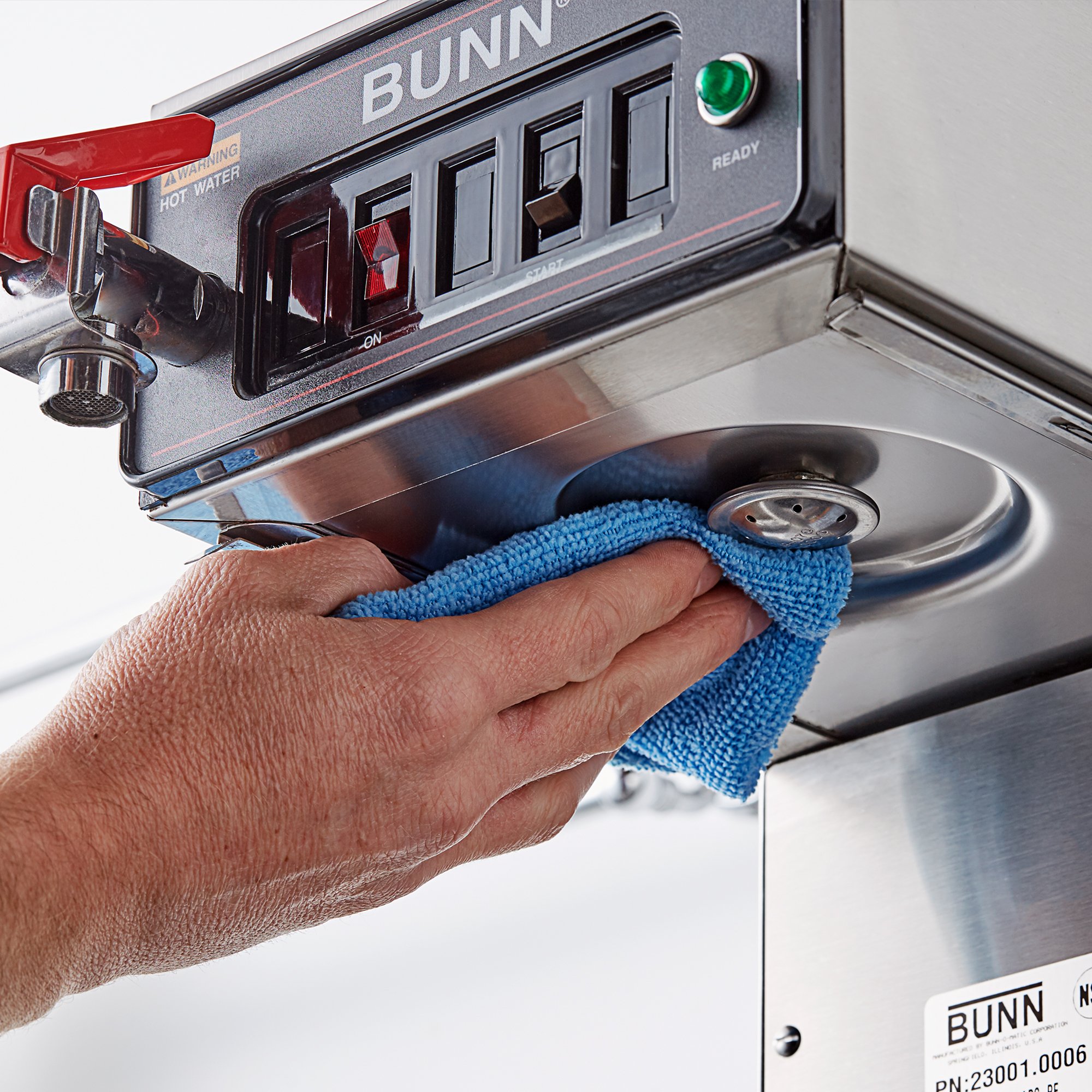
3. Remove the sprayhead and wash with a mild detergent. Remove lime deposits from the sprayhead and tube. Reattach.
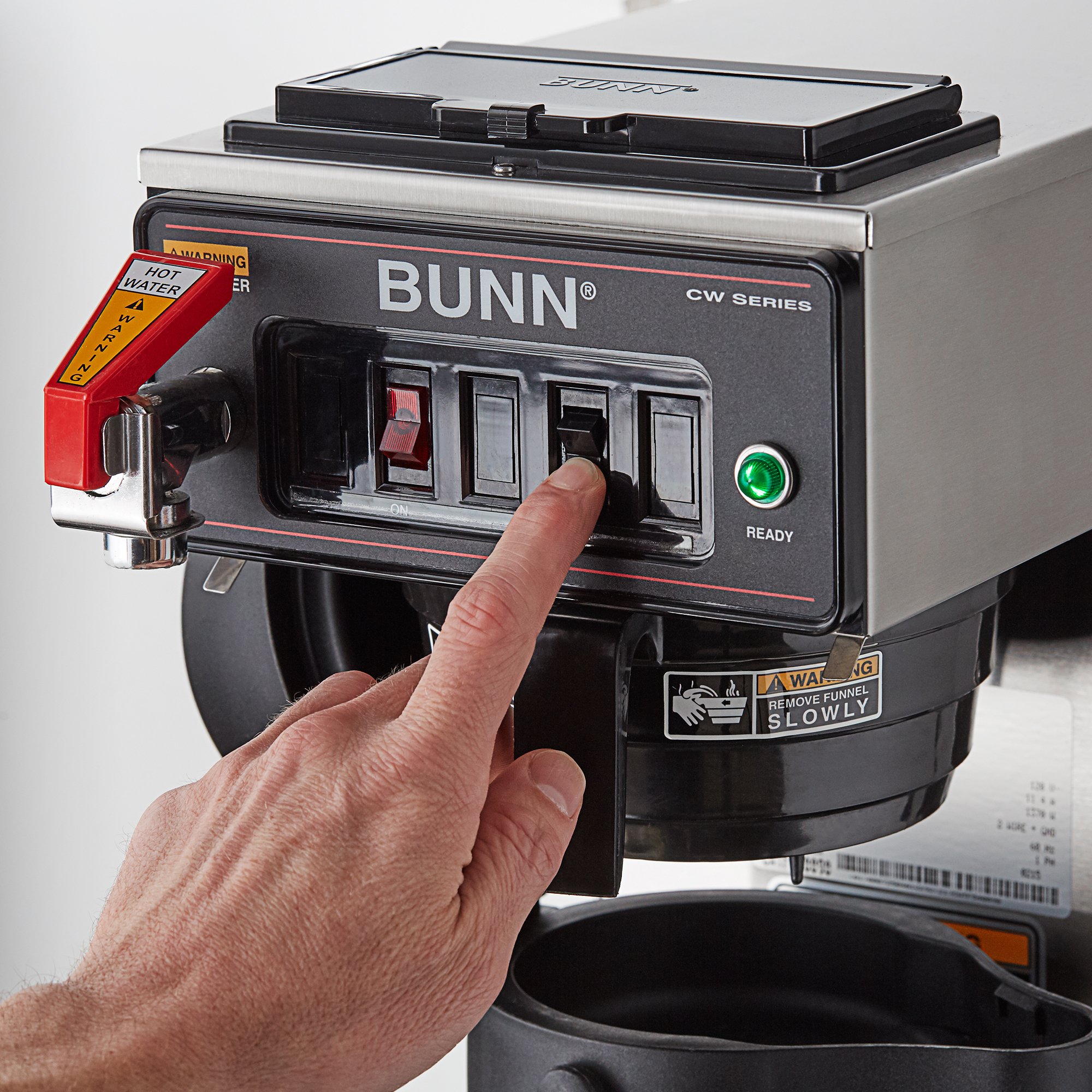
4. Start a new brew cycle using only distilled water. Repeat as necessary until lingering odors or flavors from the descaling solution are gone.
How to Use a Deliming Tool
A deliming tool will help with removing lime deposits - use the pointed end to clean the sprayhead holes, and rotate the long end around several times within the tube to scrape away stubborn deposits. While a deliming tool is designed to help clean your machine more efficiently, you can also use a toothpick or a similar object to clear away blockages in a pinch.
A deliming spring can be used to loosen and remove scale deposits from the sprayhead tube. Simply remove the sprayhead, insert the spring inside the tube, and saw back and forth to break deposits loose from the interior.
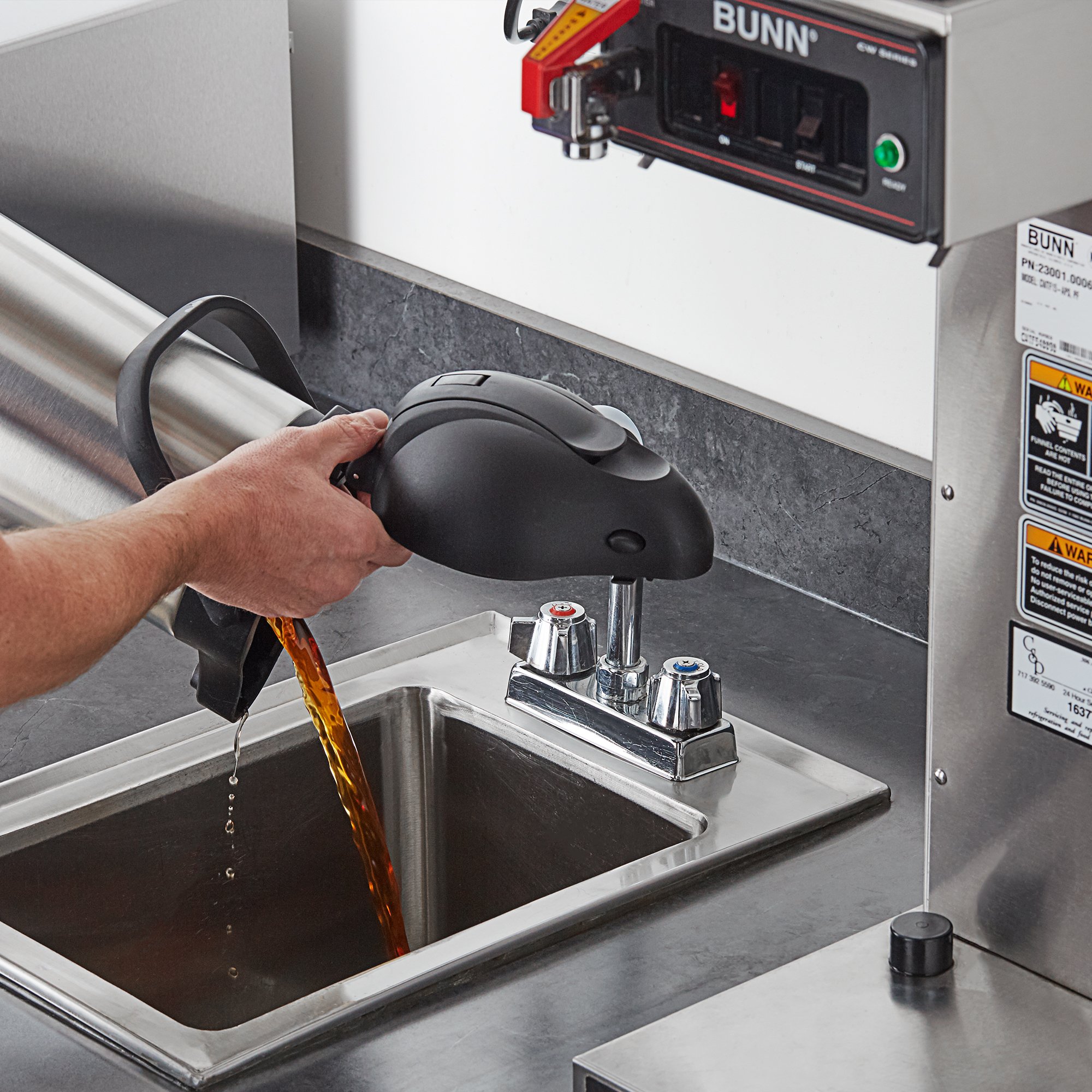
If your coffee maker is leaking or overflowing, try these fixes first.
Is the brewing vessel empty? Make sure that when you’re starting a new brew cycle, the server or decanter under the funnel is empty. Leftover coffee in the server will cause it to overflow.
Check the brew volume. Make sure that the coffee maker’s brew volume is set to the correct level – too high and it could overflow. Your owner’s manual will provide the specific settings and procedures needed to do this. You’ll also probably need to re-calibrate the sprayhead to account for this adjustment.
Clean and delime the machine. A sprayhead plugged with mineral deposits will not allow water to flow correctly – check it for damage, clean, and remove lime buildup as necessary. Also try running a deliming cycle to remove stubborn deposits within the machine.
Test a different filter paper or coffee grind. Your chosen filter paper and/or a very finely ground coffee might create a scenario where water is flowing out of the brew basket slower than it enters it, which will eventually lead to the basket overflowing. Try running a brew cycle with just water (no filter or coffee grinds) to see if it overflows. If it still does, the issue is with the machine. If it doesn’t overflow, try a different filter or a different coffee grind - Bunn recommends using OEM coffee filters to provide the best performance.
When to schedule service: If you’ve tried all of the above steps and your coffee maker is still overflowing or leaking, it’s time to get the technician and schedule repairs. If your coffee maker is leaking from the bottom or anywhere other than the brew basket, it’s also best to give the technician a call, as this could be a simple issue of changing out a seal, or a bigger issue.
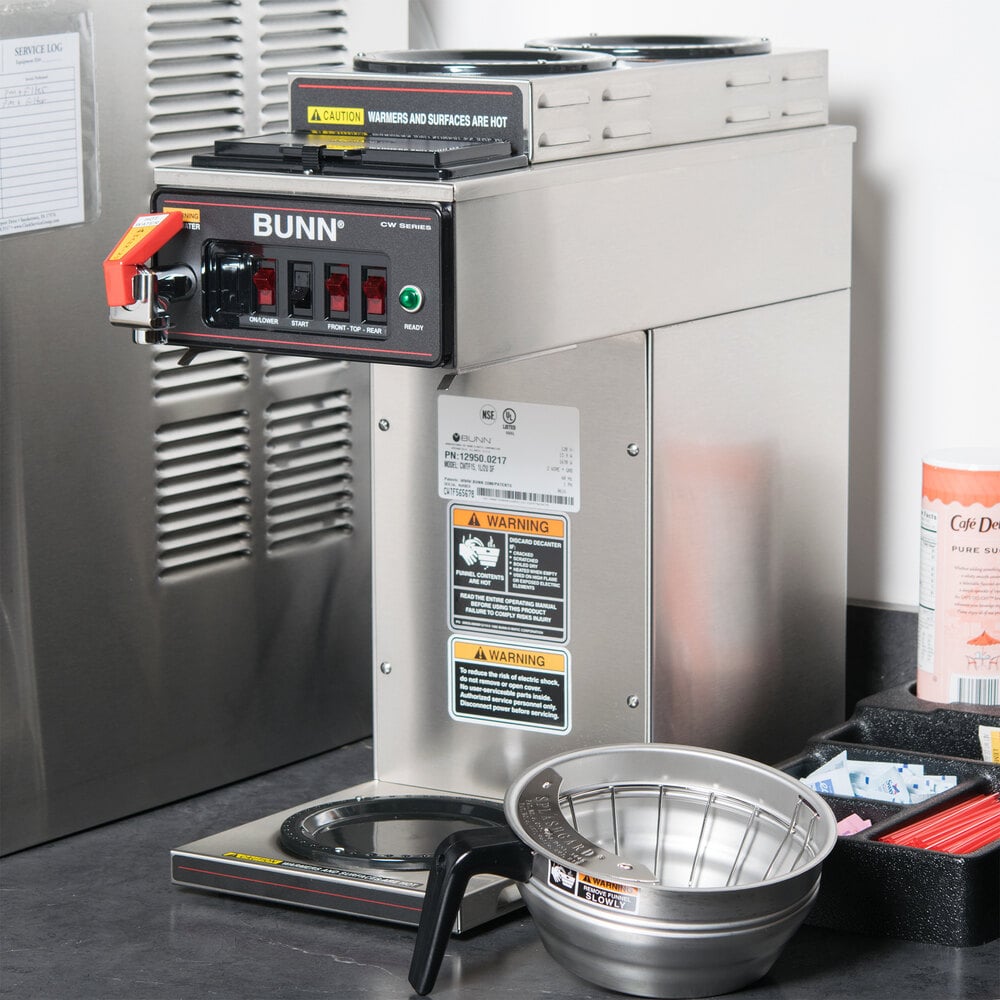
Heating issues will typically require some skill with electrical appliances and specialized tools like an ohmmeter, so we recommend calling an authorized service technician to test and fix any problems if your Bunn coffee maker is not hot enough. If you do attempt repairs, follow the instructions in your user manual and take any necessary safety precautions when working with electrical wires.
Check the error messages/user manual. Due to the wide range of popular models Bunn offers, there is a wide range of potential issues and each model will have its own procedure for fixing each issue. If your machine has a digital display, it should provide an error message describing the problem, which can be referenced in your user manual and relayed to the technician.
Common reasons coffee maker water won’t heat. The most common culprits for this issue are the tank heater, limit thermostat, control board, thermal fuses, tank heater switch, and probes. In most cases, you’ll need the expertise and equipment of a technician to diagnose which one is causing it.
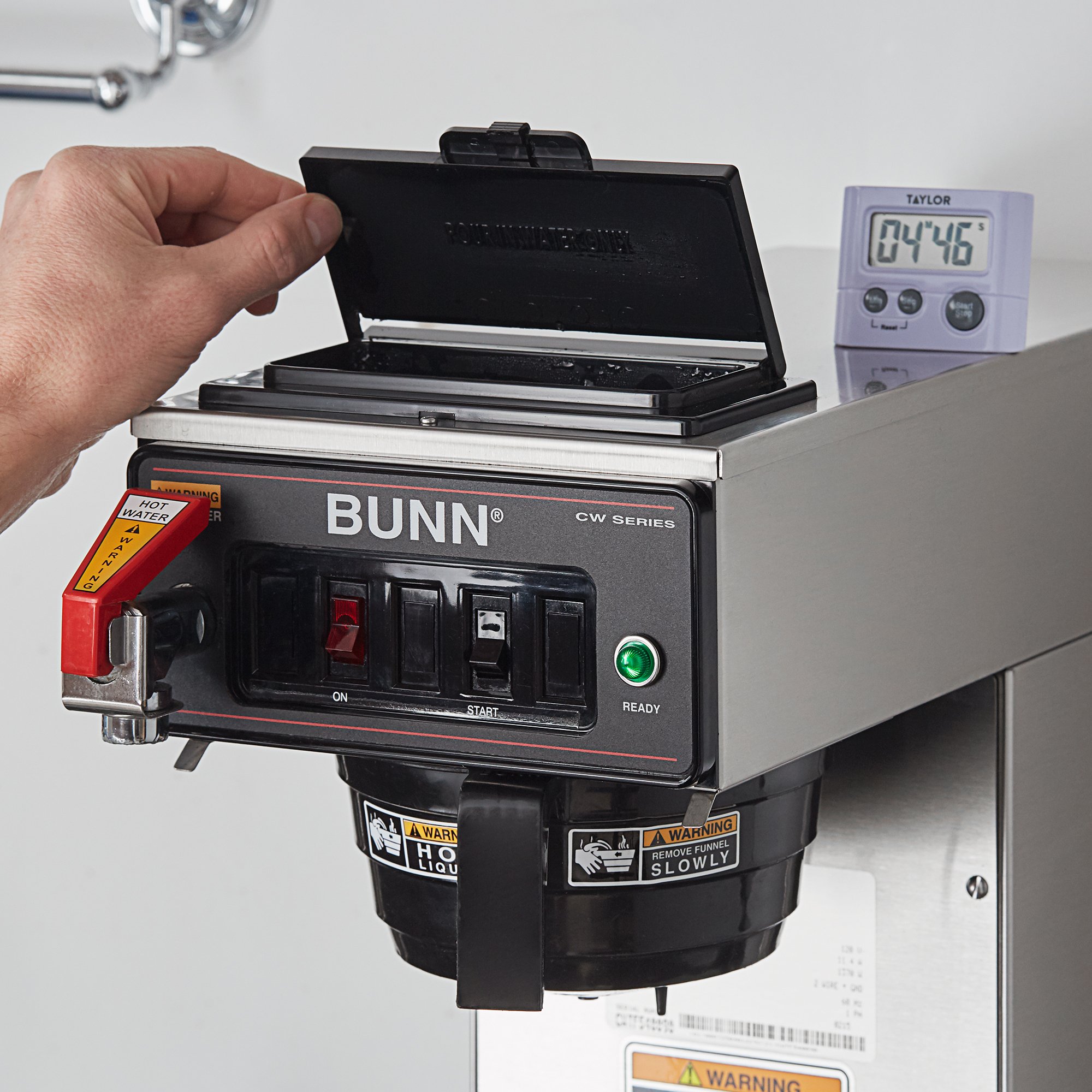
If your Bunn coffee maker is having trouble starting the brew cycle, there are a few simple tests you can try to get it working.
Check the water supply to the coffee maker. If you have an automatic machine, check to see if water is entering the unit through the water line. If not, check the plumbing for any obvious leaks or obstructions, and inspect the shut-off valves for issues. If using a pourover machine, make sure you’ve got water in the tank.
Let the coffee maker heat up. If water is present, give your brewer time to heat up. Some units, like the VPR series, can require up to 15 to 20 minutes to preheat the water tank for an initial brew cycle. If this doesn’t resolve the issue, check to see if your coffee maker has the “brew lockout” feature, and see if it is enabled. Your user manual will have instructions on how to disable this.
When to schedule service: If you’ve tried the above remedies and the brew cycle still won’t start, set up an appointment with an authorized service technician. Some common issues can include the brew switch, shut-off valves, and the control board. For each of these, you’ll want a qualified technician to handle the testing and repairs.

Coffee needs the right water temperature and the right amount of exposure between water and coffee grinds to create the perfect cup of coffee – when you have weak coffee, it’s because one or more of those conditions aren’t being met. Luckily there are some easy tests you can run to find which it is.
Check the funnel. Make sure that the filter paper is standing up correctly and not bent over or folded on itself, and that you have an even, level bed of coffee grounds in the bottom. If the pile of grounds is uneven or the filter paper doesn’t cover the whole base of the brew basket, it will not extract the coffee properly.
Check the water temperature. While the coffee maker is turned on, check the water temperature with a thermometer. Anything lower than 195 degrees Fahrenheit is too low for proper extraction, and you should refer to the section on what to do when your brewer’s water won’t heat up correctly.
Check the sprayhead. Blockages or damage in the sprayhead can prevent it from evenly distributing the water over the bed of grinds, which can affect the quality of the final product. Clean or replace the sprayhead as necessary.
Test a different filter paper or coffee grind. The combination of filter paper and coffee grinds you use can have a big impact on how the final beverage turns out. Your chosen filter paper might drain water from the brew basket too quickly for it to fully extract flavors. Coarse coffee or not using enough coffee can also limit extraction. Play around with some different combinations to see if this solves the issue. Bunn recommends using OEM coffee filters to provide the best performance.
When to schedule service: Most issues related to weak coffee can be solved by the above steps, with the exception of water temperature problems. If you’ve tried them all and nothing is working set up an appointment with an authorized technician.
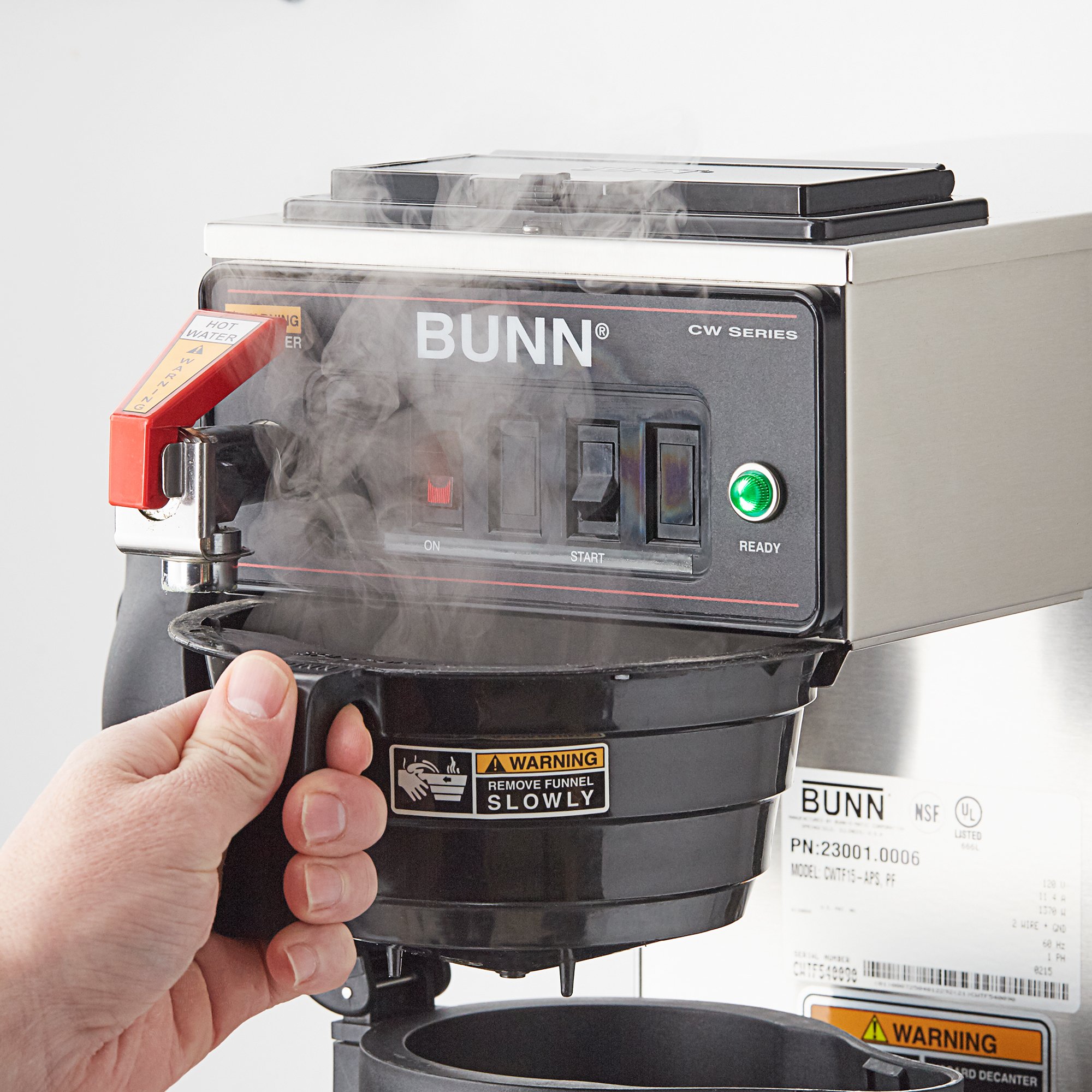
When your coffee machine spits water or generates an excessive amount of steam, it’s generally because of a malfunction in the heating element or temperature-sensing components. This is often caused by lime scale buildup, which is easy to remove with a deliming cycle.
Clean and descale the machine. Lime buildup on the tank heater and probes can cause these components to perform incorrectly. Check them for damage, clean, and remove lime buildup as necessary. Try running a deliming cycle to remove stubborn deposits within the machine.
When to schedule service: If deliming and cleaning the machine doesn’t help, schedule service with an authorized technician. There could be issues with the probe, tank heater, control thermostat, or control board.
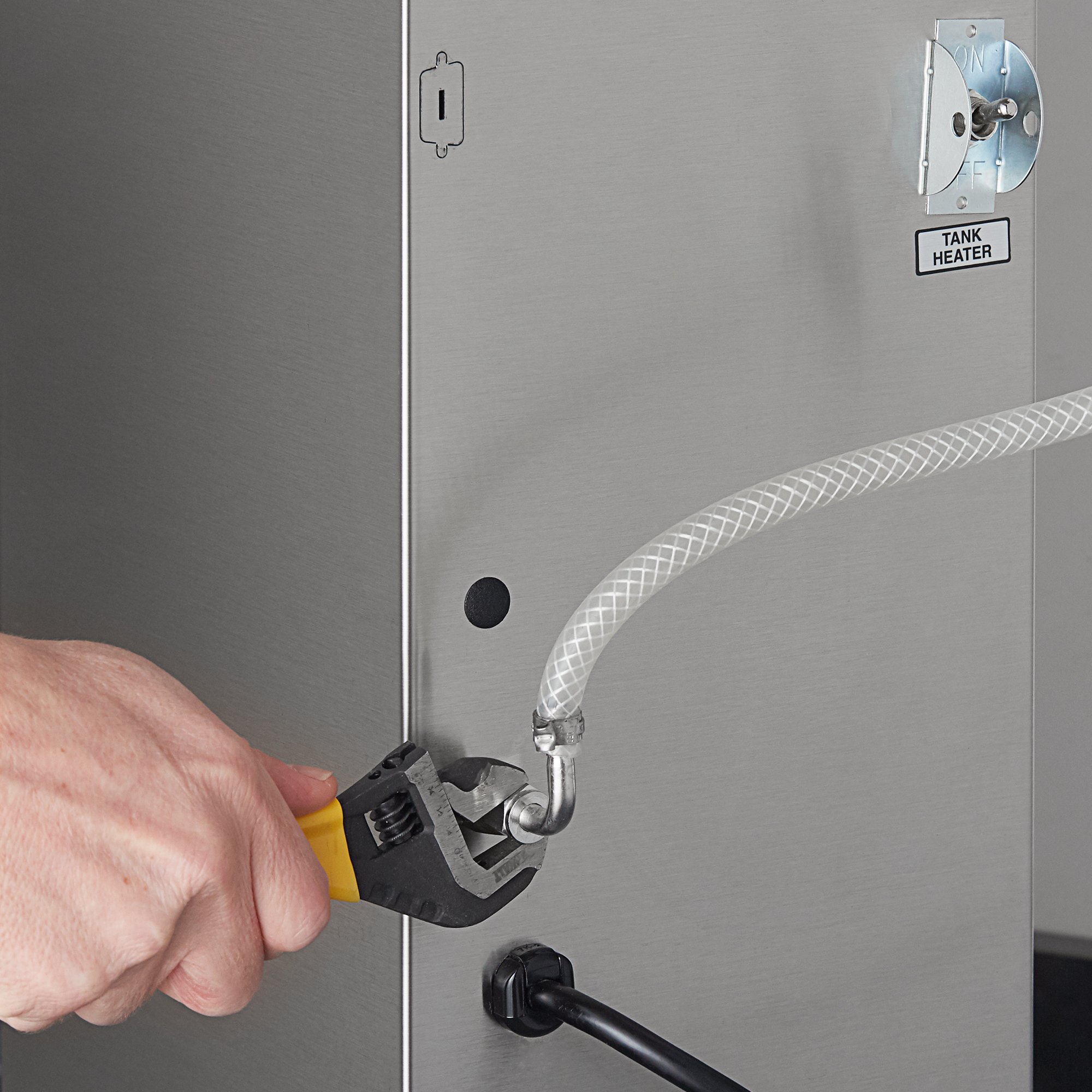
When your coffee maker is making noises, it’s usually related to issues with the water supply.
Check the water lines. This is a common issue for automatic coffee makers that use a direct water line connection. If the unit’s plumbing lines are sitting on the countertop during operation it can create vibrations and noises, so adjust them to prevent direct contact.
Check incoming water temperature and pressure. Your coffee maker needs a cold water connection, so check this first. Check the incoming water pressure to make sure it doesn’t exceed the manufacturer’s recommendations – typically this is around 90 psi.
Check the inlet solenoids. Inspect your unit’s solenoid valves to make sure that the mounting screws are snug. Tighten them if they are loose.
Clean and descale the machine. Lime buildup on the tank heater can cause noises and vibrations during operation. Clean and remove lime buildup as necessary. Try running a deliming cycle to remove stubborn deposits within the machine.
When to schedule service: If the above steps do not solve the issue, set up a service with an authorized technician. You may need to replace the solenoid valves if they are the source of the vibration, or install a new regulator if the water pressure is not suitable.
Related Resources

Coffee Shop Equipment List
You have a business plan for opening your coffee shop, a great location, and the perfect name with an awesome logo to go with it. Now that it's time to set up the shop, you might be unsure where to start. Even though specific requirements will vary from business to business, there are essential items new coffee shops require. If you're ready to take your coffee shop from a dream to a reality , check out our coffee shop equipment list below. Shop All Coffee Shop Supplies Use the following links to explore different types of coffee shop equipment: Coffee, Espresso, and Beverage Equipment Barista Tools Coffee Shop Accessories Coffee Shop Ingredients Disposable Coffee Shop Supplies Coffee Equipment Cleaning Tools Miscellaneous Barista Supplies

Types of Espresso Machines
Whether you are starting a coffee shop or looking to upgrade your current equipment, choosing the best espresso machine for your business doesn't have to be a daunting task. This guide breaks down the different types of espresso makers, the parts of an espresso machine, and the best coffee for espresso machines to help you make the right purchase for your needs. Shop All Commercial Espresso Machines

Types of Coffee Roasts
If you operate a cafe, you'll know that having a well-rounded coffee drink menu is essential to the success of your business. With over 54% of Americans over the age of 18 drinking at least one cup every day, the quality and roast color of your coffee and espresso beans can mean the difference between a great cup of coffee and a disappointment for your customers. Familiarize yourself with the different types of coffee roasts so you can make the best supply choices for your coffee shop or diversify your coffee roasting business offerings. Shop All Coffee Roasters
- Topics 1346
- Industrial 55
- Troubleshooting Guides 21
- Restaurant Management 128
- Bar Management 55
- Catering Tips 35
- Bakery Management 42
- Food Trucks & Concessions 49
- Advertising & Marketing 37
- Eco-Friendly Tips 11
- Facility Layout & Design 41
- Coffee Shop Tips 28
- Installation & Maintenance 51
- Janitorial & Pest Control 30
- Safety & Sanitation 88
- Startup Tips 104
- Menu Design 10
- Kitchen & Cooking Tips 81
- Hospitality Management 23
- Pizza & Sandwich Shop Tips 36
- Smallwares 37
- Food Prep 88
- Tabletop Items 17
- Disposables 22
- Calculators & Tools 6
- Consumables 52
- Warewashing & Laundry 18
- Cooking Equipment 90
- Food Storage & Refrigeration 51
- Beverage Equipment 34
- Office Supplies 6
- Resource Type
- In-Depth Articles272
- Buying Guides296
- How-Tos93
- Product Reviews77
